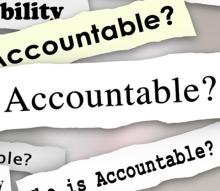This is the thirteenth in a series of profiles about recent NIH postdocs who have found an array of jobs, from academia to industry to communications and beyond, in the U.S. and abroad. What do they do now, and how did they get there? What challenges did they face, and what advice do they have? Read on to find out.
Name: Mary Litzinger
Current position: Manager of educational and career development programs, The American Association of Immunologists
Location: Bethesda, MD
Time in current position: 6 months
Postdoc: Tumor immunology and immunotherapy with Jeffrey Schlom at NCI
Finding a path: I did preclinical research as a postdoc at the NIH. I was actually there for so long—7 years—that I was promoted to a research fellow, an employee position. While I was there, I always knew I wasn’t interested in pursuing the research end and becoming a PI. I enjoyed science, but I was disenchanted with doing all the nitty-gritty details. I started thinking about non-bench positions like scientific journals and science policy.
Set yourself apart: While I was a trainee, I attended a lot of the career events held by OITE. Something that came out of many of the speakers was that a lot of scientists want to move beyond the bench, so you have to set yourself apart by showing why you want to make that transition.
I became involved with a science policy discussion group at the NIH. It was only a couple of months old. The leaders of the group had been approached by someone at AAAS who was interested in putting some of the discussions on their MySciNet website. I had an interest in getting some writing credits that weren’t scientific journal articles, so I got involved in posting material on the blog. I know that set me apart when I applied to jobs. It’s important to do as much as you can, even though it can be difficult to find the time.
Job search in a nutshell: I didn’t start actively looking for positions until late last year. I applied for some grants review positions, some science policy… not a lot. My actual job search wasn’t very long. I stumbled upon this job early in the process. I know that was quite fortunate in the current job market. I stayed local; I didn’t even have to move.
I initially leaned toward something in government because it has more permanency and good benefits. I was familiar with some professional organizations because my grad school and NIH mentors were members, but I hadn’t thought to look at job openings at AAI or other associations.
How I got my job: I saw a job ad on the NIH listserv that AAI was looking for someone with a Ph.D. to look at incoming articles, assign reviewers and write summaries. I got an interview for that. I think they liked me, but they offered that position to another candidate. During the interview process, though, it came out that they had another position open for a manager of educational programs. That position definitely interested me. I applied, and got it.
A lot of other people find jobs through networking. I applied to this one blind. They did recognize my grad school mentor, who is an AAI member, on my CV. And even though my NIH mentor was not a member, they knew of him by reputation as well.
One thing I know helped me get the initial interview is they were looking for someone with a breadth of immunology knowledge, like someone who studied one area in grad school and another in their postdoc, as I did. I didn’t come in with any of the business or management experience they were looking for, but the position had been open and they hadn’t found anyone who met all their requirements, so they were willing to train me.
Day-to-day: I handle a number of educational and career programs. I do planning for the career development sessions at the annual meeting and administering the awards that coincide with it. I also help plan the immunology courses we offer each summer and a summer research program for high school teachers. The day-to-day schedule changes a little depending on the time of year. In the summer, the emphasis was on the courses, and my duties included responding to inquiries, managing materials for printing, and arranging details on site. In the fall, we got ready for the annual meeting—planning the career development sessions, vetting applications for the awards and responding to applicants. Year-round, I will do some writing for the AAI newsletter. AAI is approaching its centennial, so I recently worked with our staff historian to write a piece on the first article published in the Journal of Immunology, and the plan is for me to write more about the history of AAI as well as other topics. Part of my job is keeping up with the career programs that other organizations and societies are offering and deciding if these would interest our members. We also cover policy issues that affect our members.
Hindsight is 20/20: If I’d known where I would end up, there are things I would have done to be better prepared now. I could have honed up on business skills. Currently, I help suggest speakers for career development sessions and courses. Sometimes at the NIH I was busy doing research to the exclusion of other things, but there were so many talks offered every week. Now, I wish I’d gone to more of those and seen how good different people were at speaking. At the same time, I didn’t know what position I’d end up in. I think it’s important to think about your career plan as early as possible so you can start career development.
The upside: Every day is new and different and a challenge. Until I’ve been here a full year, and even then, there are so many things to learn. I’m really enjoying it so far.
Mary can be contacted through the OITE alumni database.




